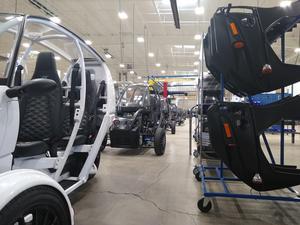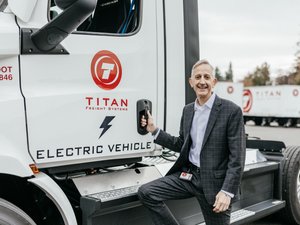
Recent sales hiccups notwithstanding, rising electric vehicle adoption will one day create a tide of batteries no longer fit for EV duty. That looming reality — along with environmental concern and federal incentives — has helped sprout recycling ventures that have pulled in billions in private and public backing.
A Portland startup called Currents, looking at that same picture, sees a different business opportunity.
It aims to facilitate the movement of batteries from the thousands of auto dismantlers, mechanic shops and insurance companies who often end up with them, to a smaller universe of OEMs and recyclers who want them. It's a vision that appears to be gaining traction.

Bootstrapped when founder and CEO Anthony Garbarino set out on an entrepreneurial path in 2021, Currents raised $3.2 million in seed funding from HG Ventures in 2022. In December, Currents announced Nissan North America as the first customer for what Garbarino calls a marketplace or logistics platform.
Auto manufacturers get some batteries back from dealers, but the Inflation Reduction Act makes it worth their while to find more. That's because when foreign-sourced battery inputs such as lithium, cobalt and nickel are recycled in the U.S., they become domestic content, qualifying for production incentives.
"The bottleneck is the logistics," Garbarino told the Business Journal. "Forty to 60% of the price of recycling a battery is just the logistics to send it from the supplier to the recycler's facility. And that's because we're sending empty milk-run trucks to pick up single batteries."
That gives Currents an opening by providing "essentially an API connection" among suppliers, buyers and carriers, surfacing location, price and battery condition.
The result, in simplified terms, is that instead of 10 trucks going out and picking up batteries from 10 suppliers in a 100-mile range, one truck does it at the best price.
"If we can spread the cost out among those 10 suppliers, bring that full truckload price down, maximize the sale price of the battery since we're selling in bulk, pass all those savings through to the suppliers, that leaves room for our commission," Garbarino said.
The Garbarino Disposal & Recycling connection
Garbarino came to the Currents idea with something of a background in recycling — the family business Garbarino Disposal & Recycling, which operates in Beaverton, Hillsboro and unincorporated Washington County. After working as a driver there he became a co-owner with a sister in 2020 when their father passed away.
"One thing that happened, I really started taking my career and my life way more seriously," Garbarino said. He searched out successful people and they had a common message: Chase your curiosity.
That led to conversations with second-life integrators, businesses that were trying to use old EV batteries in battery energy storage systems. Batteries lose charging capacity as they charge and discharge. For EV use, they're considered at the "end of life" when they fall to around 75% of their original charge capacity. But they can still be viable for stationary energy storage.
"One of these integrators told me that buying batteries was like the wild, wild West," Garbarino said. "It was around then I thought, 'I've identified the market need: a marketplace."
Leaning on funds left to him by his father, Garbarino outsourced early software development and hustled to every trade show and industry event he could find. Now there's a team of five in place, with a new hire that Garbarino referred to both as "my No. 2 guy" and "co-founder" soon to be announced.
"He's making the jump from one of the most well-established companies in the space, deeply understands the supply chain and knows everyone," Garbarino said.
A major task now is a "seed-plus" round that can help grow the company and position it for the battery tide to come in, around 2027.
"That's when the market starts to really move from the innovators into the early adopters, and we start seeing significant battery volumes," Garbarino said. "For this business model to work, we need to have scale. To have scale, we need to be the first mover, and that's exactly what we're targeting right now."






